Advertisements
Advertisements
प्रश्न
In figure, PQ is parallel to BC, AP : AB = 2 : 7. If QC = 0 and BC = 21,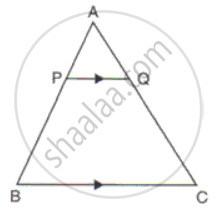
Find
(i) AQ
(ii) PQ
उत्तर
(i) Since PQ || BC
`"AP"/"PB" = "AQ"/"QC"`
⇒ `"AP"/("AB" - "AP") = "AQ"/"QC"`
⇒ `(2)/(5) = "AQ"/(10)`
⇒ AQ = `(2 xx 10)/(5)`
⇒ AQ = 4.
(ii) Since PQ || BC
`"AP"/"AB" = "PQ"/"BC"`
⇒ `(2)/(7) = "PQ"/(21)`
⇒ PQ = `(2 xx 21)/(7)`
⇒ PQ = 6.
APPEARS IN
संबंधित प्रश्न
See the given figure. DE || BC. Find AD.
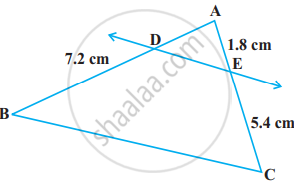
Given: FB = FD, AE ⊥ FD and FC ⊥ AD.
Prove that: `(FB)/(AD) = (BC)/(ED)`.
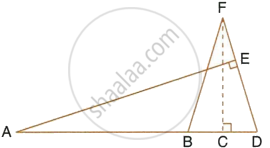
ΔABC~ΔDEF and their areas are respectively 64 cm2 and 121cm2. If EF = 15.4cm, find BC.
Select the appropriate alternative.
In ∆ABC and ∆PQR, in a one to one correspondence \[\frac{AB}{QR} = \frac{BC}{PR} = \frac{CA}{PQ}\]
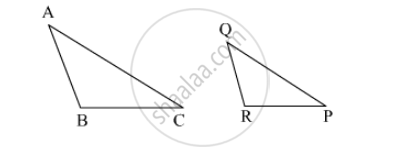
In the figure , ABCD is a quadrilateral . F is a point on AD such that AF = 2.1 cm and FD = 4.9 cm . E and G are points on AC and AB respectively such that EF || CD and GE || BC . Find `("Ar" triangle "BCD")/("Ar" triangle "GEF")`
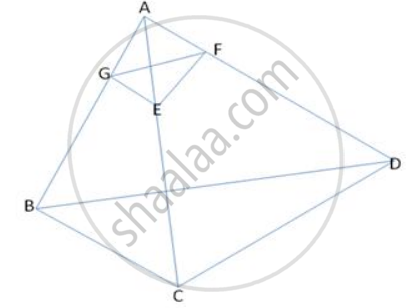
Find the scale factor in each of the following and state the type of size transformation:
Image length = 8cm, Actual length = 20cm.
ΔABC is enlarged, with a scale factor 5. Find: BC, f B'C' = 16cm
A model of a ship is made to a scale of 1:500. Find: The volume of the model when the volume of the ship is 1km3
In the given figure, ∠ACB = ∠CDA, AC = 8cm, AD = 3cm, then BD is ______.
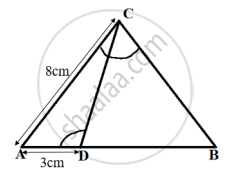
Prove that if a line is drawn parallel to one side of a triangle intersecting the other two sides in distinct points, then the other two sides are divided in the same ratio.
Using the above theorem prove that a line through the point of intersection of the diagonals and parallel to the base of the trapezium divides the non-parallel sides in the same ratio.
